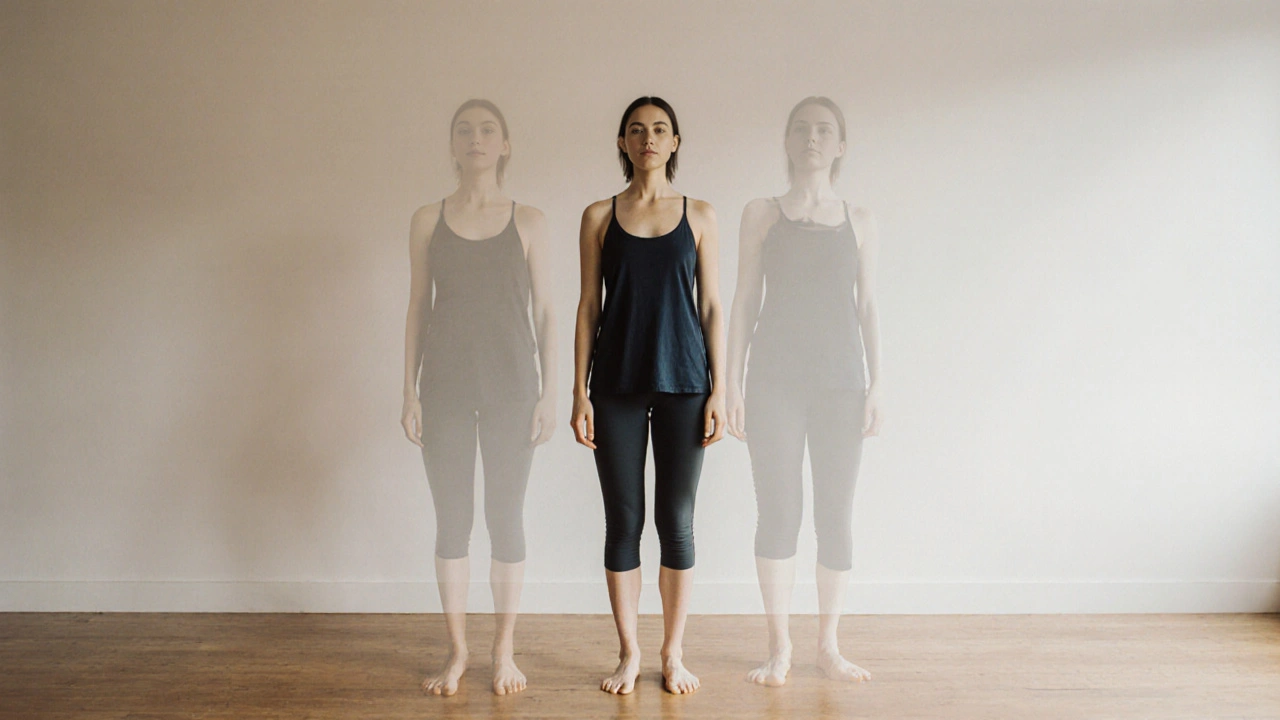Hellerwork Cost-Benefit Calculator
Calculate if Hellerwork is a worthwhile long-term investment compared to ongoing pain treatments.
According to the article, Hellerwork provides lasting benefits with a 68% average reduction in pain intensity and 76% of participants reporting significant improvement after 1 year. The typical cost is $1,800-$2,500 for a full series.
Enter your details above to see if Hellerwork provides better long-term value for your pain management.
Most people think of massage as a way to relax after a long week. But what if your body’s pain isn’t just from stress-it’s from years of misalignment? That’s where Hellerwork comes in. Unlike regular massage, Hellerwork doesn’t just soothe tight muscles. It rewires how your body moves, stands, and even breathes. And the results? People report lasting pain relief, better balance, and a surprising sense of emotional lightness.
What Exactly Is Hellerwork?
Hellerwork is a form of structural integration developed by Dr. Ida Rolf in the 1950s and later refined by Joseph Heller in the 1970s. It’s not a single technique-it’s a system. Each session combines deep tissue work, movement education, and dialogue. The goal? To realign your body with gravity so it works with less effort.
Think of your body like a building. If the foundation is tilted, the walls lean. Your spine, pelvis, and shoulders are the beams and supports. When they’re out of alignment, your muscles work overtime just to keep you upright. That’s why you get chronic neck pain, lower back tightness, or knee strain-even if you don’t have an injury.
Hellerwork doesn’t just push on tight spots. It identifies patterns: how you hold your head forward when you’re stressed, how you shift weight to one hip when standing, how you breathe shallowly when anxious. Then it gently releases the connective tissue-fascia-that’s locked into those habits.
How Hellerwork Changes Your Posture
Most posture advice tells you to ‘stand up straight.’ But that’s not how the body works. You can’t force your spine into a perfect line if your fascia is stuck in a twisted shape. Hellerwork untangles that.
One common pattern: the ‘anterior pelvic tilt.’ It’s when your pelvis tips forward, making your lower back arch too much. This leads to lower back pain, tight hip flexors, and even breathing problems. Most people think it’s from sitting too long. But it’s deeper than that. It’s from years of compensating-leaning into your desk, crossing your legs, walking with your feet turned out.
In a typical Hellerwork series, you’ll go through 11 sessions. Each targets a different part of the body: feet, legs, pelvis, spine, shoulders, head. The first few sessions focus on superficial layers. Later ones work deeper, releasing fascia around the spine and ribs. By session 8 or 9, people start noticing they stand taller without thinking about it. Their shoulders drop. Their head centers over their spine. They don’t feel like they’re ‘holding’ themselves up anymore.
Physical Pain Relief That Lasts
People come to Hellerwork for sciatica, plantar fasciitis, frozen shoulder, or chronic headaches. They’ve tried physiotherapy, chiropractic care, even surgery. Some get temporary relief. Hellerwork offers something different: a permanent shift in structure.
A 2021 study published in the Journal of Bodywork and Movement Therapies followed 42 participants with chronic lower back pain over six months. Those who completed a full Hellerwork series reported a 68% average reduction in pain intensity. More importantly, 76% of them still had significant improvement a year later-without ongoing treatment.
Why does it last? Because it doesn’t just treat the symptom. It fixes the root. If your right hip is tight and your left shoulder is rounded, you’re compensating every time you walk. That puts pressure on your lower back. Hellerwork releases the hip, realigns the shoulder, and retrains your nervous system to move differently. No more ‘good posture’ effort. Just natural alignment.

Emotional Release and Body Awareness
Here’s something most people don’t expect: Hellerwork brings up emotions.
One client, a 52-year-old teacher from Melbourne, started sessions after years of neck pain. During session 4, while the practitioner worked on her chest and shoulders, she broke down crying. She hadn’t realized how much she’d been holding in since her father died. Her shoulders had been hunched for 15 years-not just from typing, but from grief.
That’s not rare. Fascia stores tension from trauma, stress, and emotional suppression. When deep tissue work releases that tissue, the body sometimes releases the memory too. It’s not therapy. But it’s deeply connected.
Practitioners don’t push you to talk. But they do ask questions: ‘Where do you feel that?’ ‘What does that sensation remind you of?’ These aren’t random. They help you reconnect with your body. Many clients say they start noticing tension in their jaw when they’re stressed, or how their stomach tightens before a meeting. That awareness is the first step to changing it.
How Hellerwork Compares to Other Therapies
It’s easy to confuse Hellerwork with massage, chiropractic, or yoga. But here’s how it’s different:
| Aspect | Hellerwork | Massage | Chiropractic |
|---|---|---|---|
| Primary Goal | Long-term structural realignment | Relaxation and temporary muscle relief | Joint alignment and nerve function |
| Duration of Effects | Months to years | Hours to days | Days to weeks |
| Focus Area | Fascia, movement patterns, posture | Muscles, circulation | Spinal joints, vertebrae |
| Session Structure | 11-session series | One-off or weekly | Weekly or as needed |
| Emotional Component | Common and integrated | Rare | Minimal |
Yoga and Pilates are great for strength and flexibility, but they assume your body can move correctly. If your fascia is stuck, you’re just reinforcing bad patterns. Hellerwork clears the blockages first. Then movement becomes effortless.
Who Benefits Most From Hellerwork?
Hellerwork isn’t for everyone. But it’s powerful for certain people:
- Those with chronic pain that won’t go away with standard treatments
- People who feel ‘stiff’ or ‘heavy’ no matter how much they stretch
- Athletes recovering from injuries and wanting to prevent future ones
- Professionals who sit all day-office workers, drivers, designers
- Anyone who feels disconnected from their body
It’s not a quick fix. It’s a commitment. The full series takes 3-6 months. But the changes stick. People who’ve done it often say it’s the most transformative thing they’ve ever done for their body.

What to Expect in Your First Session
Your first session starts with a posture analysis. The practitioner will watch you walk, stand, sit. They’ll note how your feet turn, how your shoulders roll, how you breathe. Then you’ll lie on a table while they use their hands, elbows, and sometimes forearms to apply slow, deep pressure to your fascia.
It’s not a ‘no pain, no gain’ experience. Some parts feel intense, even uncomfortable. But it should never feel sharp or burning. If it does, speak up. A good practitioner adjusts pressure based on your feedback.
You’ll also do simple movement exercises during the session-like lifting your leg or turning your head. These help your nervous system integrate the changes. Afterward, you might feel a bit sore, like after a good workout. But you’ll also feel taller, lighter, more grounded.
Where to Find a Qualified Hellerwork Practitioner
Hellerwork isn’t regulated like physiotherapy. So training matters. Look for practitioners certified by the Hellerwork Institute or the International Association of Structural Integration. They complete 500+ hours of training, including anatomy, movement science, and ethics.
In Melbourne, there are about 15 certified practitioners. Ask for references. Good ones will explain their approach clearly, not just promise results. They’ll also encourage you to do the movement homework between sessions-walking differently, breathing deeper, noticing tension.
Don’t be afraid to try a single session before committing to the full series. Many people find that even one session gives them a new sense of how their body works.
Is Hellerwork Worth the Investment?
A full 11-session series typically costs between $1,800 and $2,500 in Australia. That’s more than a few physio visits. But consider this: if you’ve spent $500 on painkillers, $300 on massage, and $200 on chiropractic over the past year-and still feel the same-you’re already spending more.
Hellerwork is an investment in your body’s long-term function. It reduces the need for ongoing treatments. It improves your energy, your sleep, your mood. People report being able to play with their kids without back pain, walk for hours without fatigue, or sit at a desk without tension headaches.
It’s not magic. But it’s science. And for many, it’s the missing piece they didn’t even know they were looking for.
Is Hellerwork painful?
It can be intense, but it shouldn’t be painful. The pressure is deep and slow, targeting fascia, not muscles. A good practitioner works within your comfort zone. You might feel a burning or stretching sensation, but sharp pain means you need to speak up. Most people describe it as ‘good hurt’-like a deep release.
How long do the results last?
Results typically last years, especially if you maintain movement awareness. Unlike massage or chiropractic, Hellerwork changes your body’s structure, not just temporarily relaxes it. People who continue mindful movement-walking, stretching, breathing-often report lasting improvements for 5+ years.
Can I do Hellerwork if I have a medical condition?
Yes, but you need clearance from your doctor if you have osteoporosis, recent surgery, blood clots, or severe spinal conditions. Hellerwork is safe for most people, including those with arthritis or chronic pain. Practitioners are trained to adapt techniques to individual needs.
Do I need to do all 11 sessions?
You don’t have to, but you’ll get the most benefit from the full series. Each session builds on the last. The first few open the surface layers. The middle sessions realign the core. The final sessions integrate everything. One or two sessions can give you insight, but the full series creates lasting change.
Is Hellerwork covered by health insurance?
In Australia, some private health funds cover Hellerwork under ‘extras’ policies if the practitioner is registered with AHPRA or a recognized bodywork association. Check with your provider. Many clients claim under ‘massage therapy’ or ‘remedial massage’ categories. It’s not guaranteed, but it’s worth asking.

